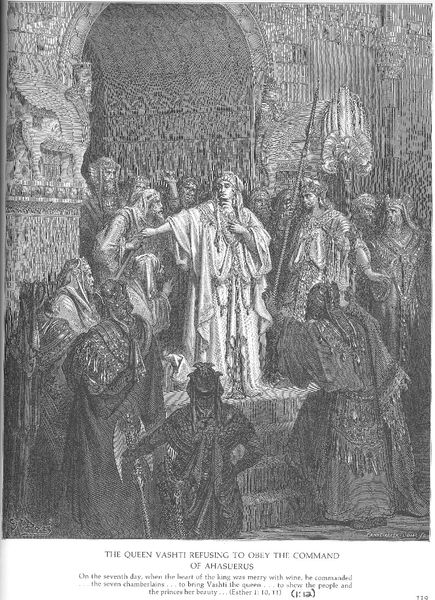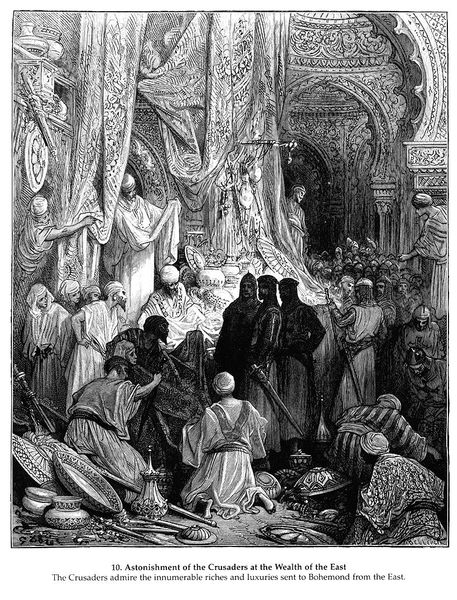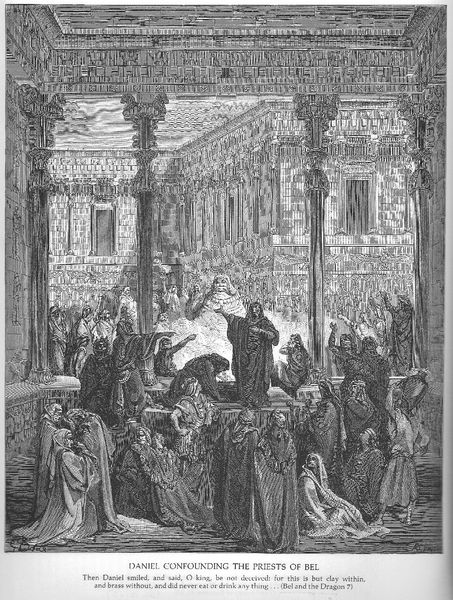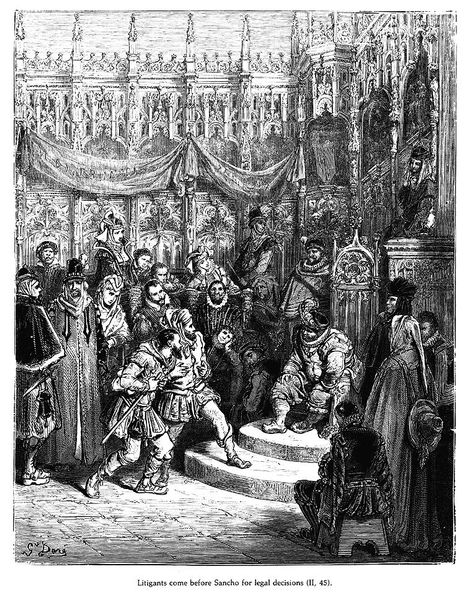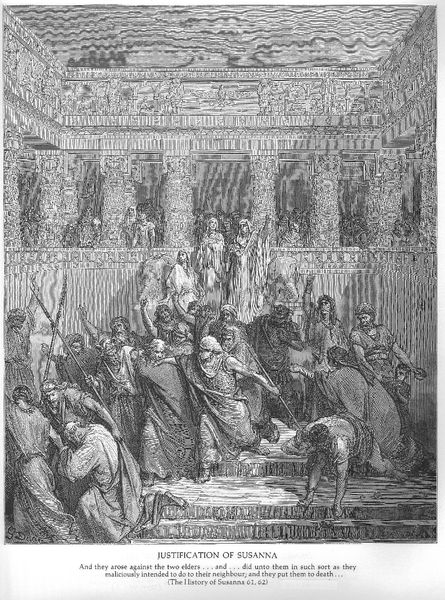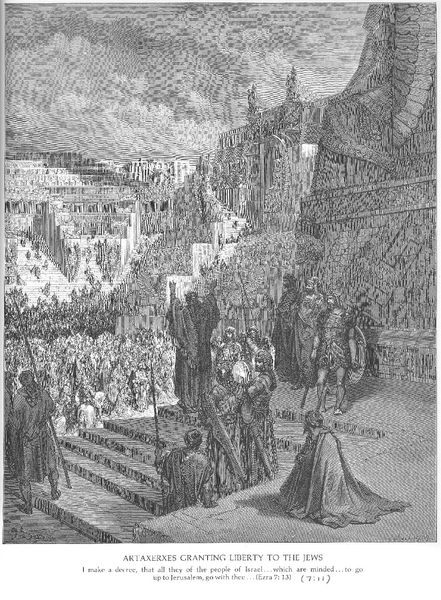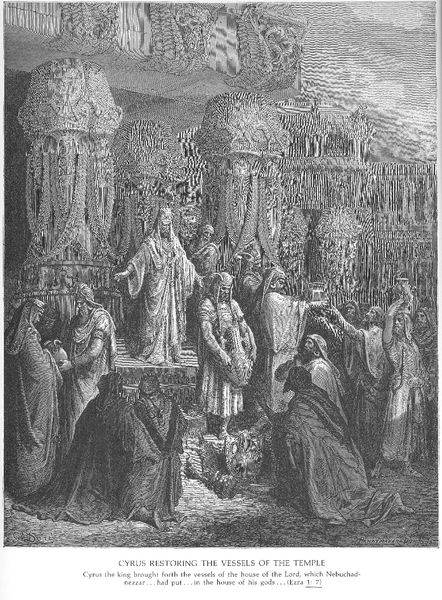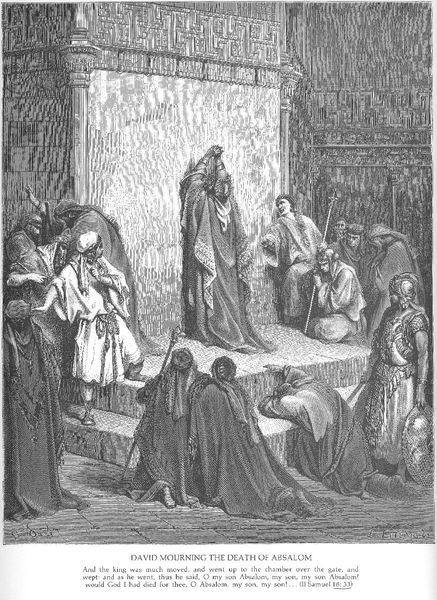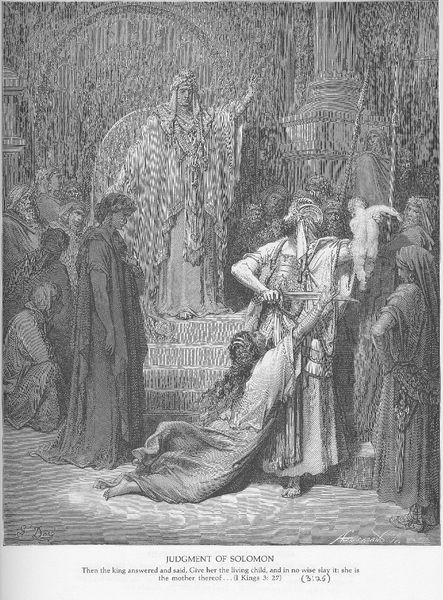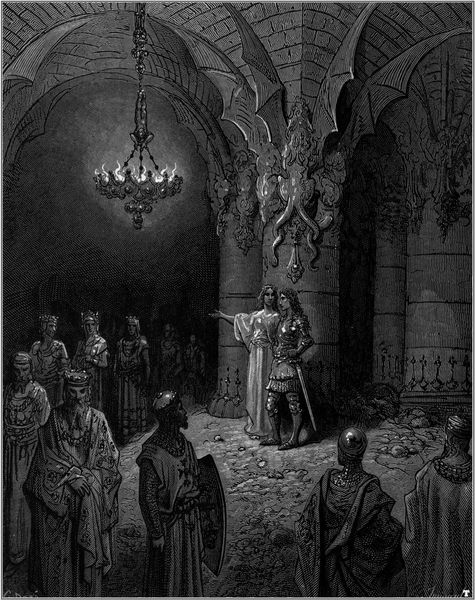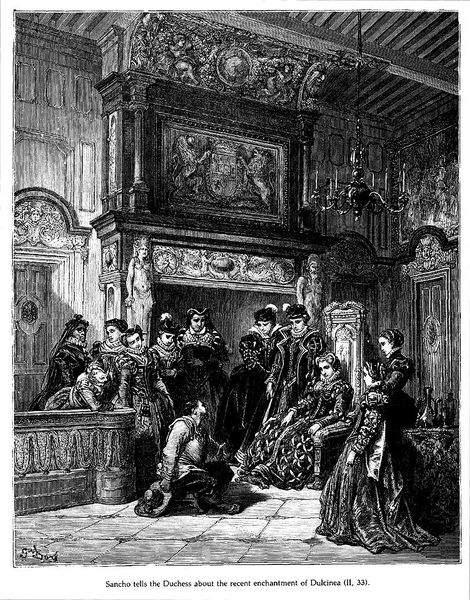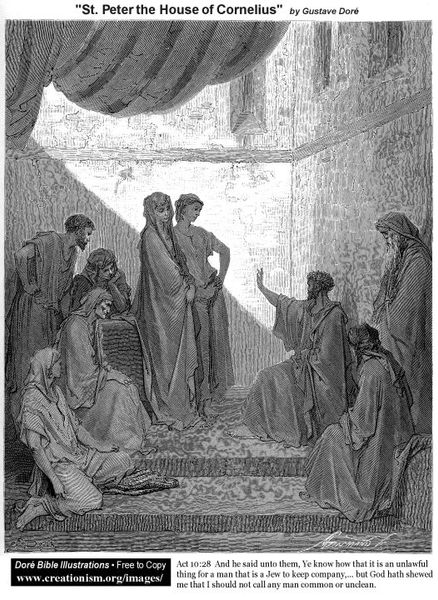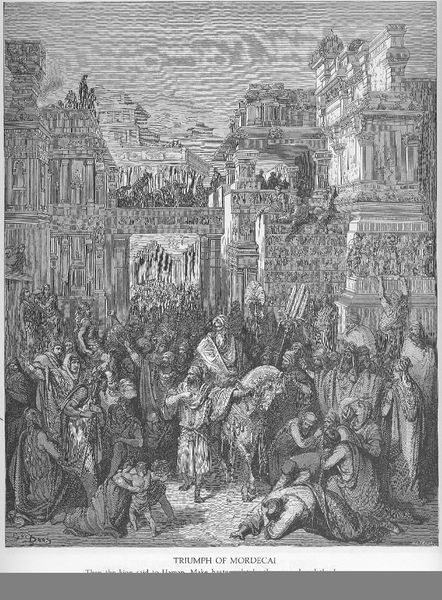
drawing, print, photography, ink, engraving
#
portrait
#
drawing
#
narrative-art
# print
#
pen illustration
#
landscape
#
ink line art
#
photography
#
linework heavy
#
ink
#
pen-ink sketch
#
thin linework
#
christianity
#
line
#
pen work
#
islamic-art
#
history-painting
#
engraving
#
realism
Copyright: Public domain
Gustave Dore made this engraving of Solomon Receiving the Queen of Sheba, but its date is unknown. It is an exercise in architectural and figurative composition, made in the service of illustrating a specific episode from religious scripture. The image brings together two ancient cultures in its depiction of the queen’s visit. Dore likely drew on contemporary interpretations of the biblical narrative, referencing social structures of 19th-century Europe. Note how the Queen of Sheba ascends to Solomon's throne, demonstrating social hierarchies, gender roles, and power dynamics, all of which are inflected by European imperialism. By studying such elements – like the architectural style, and the figures’ postures and attire – we can see how the image creates meaning through cultural references, political ideologies, and social structures prevalent in Dore’s time. Biblical commentaries, historical texts, and studies of 19th-century European social norms would all help contextualize this artwork. In essence, the meaning of this engraving is contingent on its social and institutional setting, requiring in-depth study to fully appreciate.
Comments
No comments
Be the first to comment and join the conversation on the ultimate creative platform.
